Last updated on September 5th, 2025 at 01:07 am
Sights in Corfu Town: Why They’re Worth Visiting
Corfu Town (Kerkyra) is the cultural and historical heart of the island — a UNESCO World Heritage Site shaped by centuries of Venetian, French, and British rule. Its compact old town is a treasure trove of grand palaces, imposing fortresses, elegant squares, and winding alleyways that invite exploration on foot.
From the iconic Liston Arcade and Spianada Square to ancient churches and fascinating museums, every corner reveals a piece of Corfu’s rich, multicultural past. Visiting these landmarks isn’t just sightseeing — it’s stepping into a living timeline that makes Corfu Town one of Greece’s most captivating destinations.
📌Tip: Do you want to read about Corfu Sights when you are offline? Download the Corfu Sights and Monuments PDF
Corfu Old Fortress with the Old British Hospital
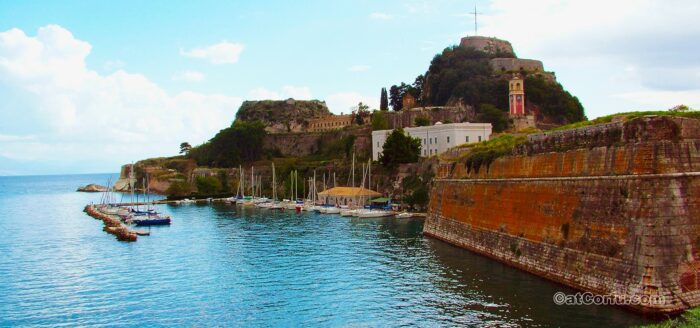
Step back in time at the Old Fortress — explore its historic walls, the British Hospital ruins, and enjoy spectacular views of Corfu Town.
Read more about the Old FortressCorfu New Fortress: A Venetian Fortification Masterpiece

Dominating the skyline above the old port, the New Fortress offers panoramic views and a glimpse into 16th-century Venetian defenses.
Explore the impressive Venetian New Fortress and enjoy panoramic harbor views.
Discover why New Fortress is a must-seeCorfu Monuments and Sights
Esplanade Square and the Liston Promenade

The heart of Corfu’s social life, this vast square is flanked by French-style architecture and the elegant arcades of the Liston.
Discover Esplanade and ListonThe Palace of St. Michael and St. George
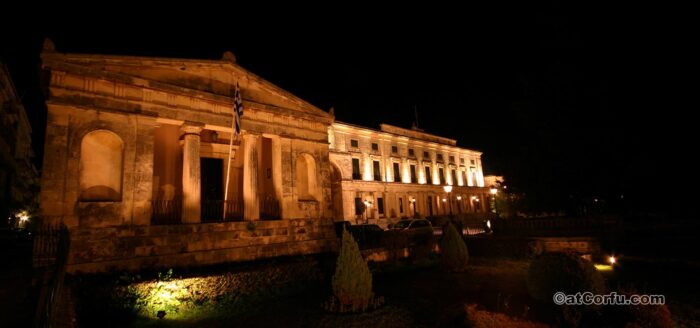
Once home to British High Commissioners, today this neoclassical palace houses the Museum of Asian Art.
Visit the Palace of St. Michael and St. GeorgeCorfu Town Hall – San Giacomo Theatre

A baroque building that transitioned from a Venetian theater to the present-day Town Hall.
Learn about San GiacomoThe Bell Tower of Annunziata
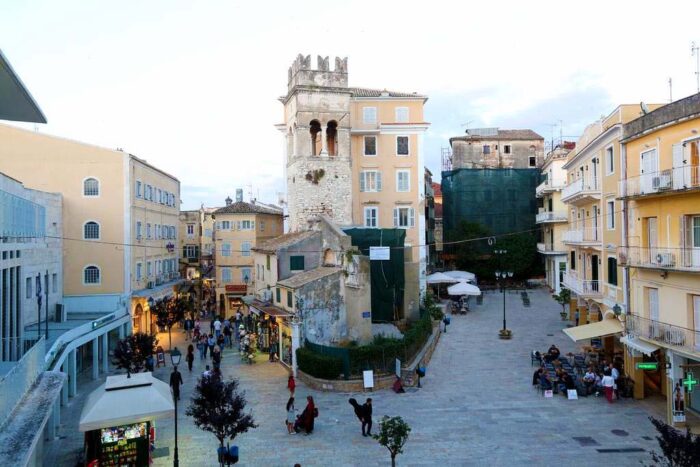
All that remains of a 16th-century church linked to the historic Battle of Nafpaktos.
Read about the Annunziata Bell TowerMuseums in Corfu Town
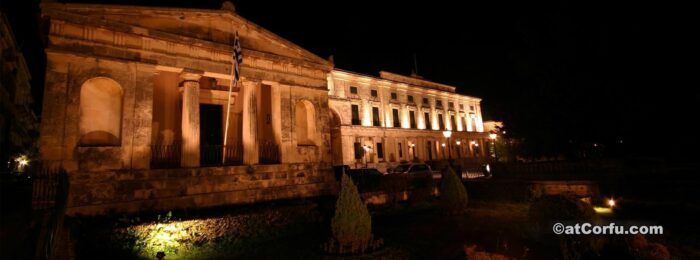
From archaeology to Byzantine icons, Corfu Town is home to many unique museums worth visiting.
Browse the Best Museums in CorfuCorfu Town
As the capital and cultural heart of the island, Corfu Town (Kerkyra) is home to some of Corfu’s most iconic monuments. From Venetian fortresses and grand palaces to vibrant squares and hidden gems, this historic town is a destination in itself.
For a deeper look into the town’s layout, neighborhoods, and daily life.
Map of Corfu Town’s Monuments
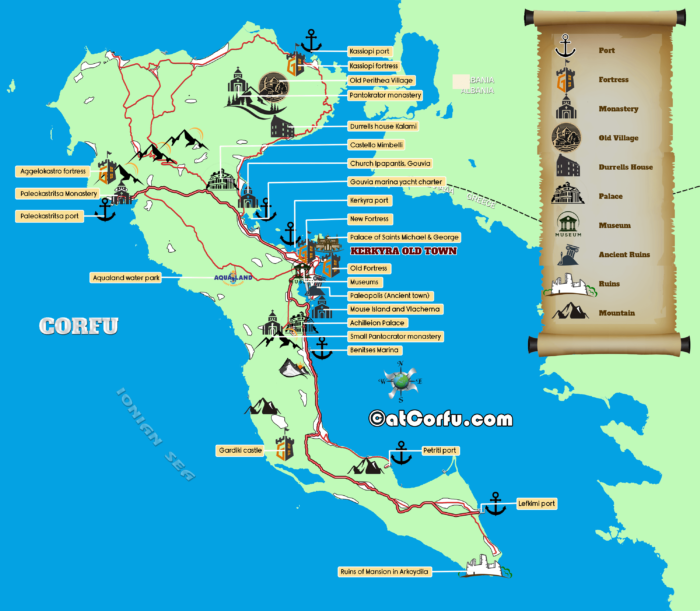
Use our Corfu map with sights to easily locate and explore the island’s top landmarks, both in Corfu Town and beyond.
Open Big size MapMonuments and Sights Beyond Corfu Town
Corfu’s charm extends far beyond its historic town center. The island is dotted with impressive monuments and breathtaking sights that tell stories from ancient times to the modern era.
From majestic palaces and medieval castles perched on hillsides to serene islands and archaeological ruins, the cultural heritage outside Corfu Town offers a unique glimpse into the island’s diverse past.
Explore these fascinating landmarks scattered around Corfu and discover the rich history and stunning scenery waiting just beyond the city limits.
Achilleion Palace

Built for Empress Elisabeth of Austria (Sisi), the Achilleion Palace is a neoclassical masterpiece overlooking the sea. Famous for its stunning gardens and statues inspired by Greek mythology, it remains one of Corfu’s top attractions.
Discover the grandeur and mythological beauty of the Achilleion Palace — plan your visit and explore its stunning gardens and statues today.
Visit Achilleion PalaceAngelokastro (Angel Castle)
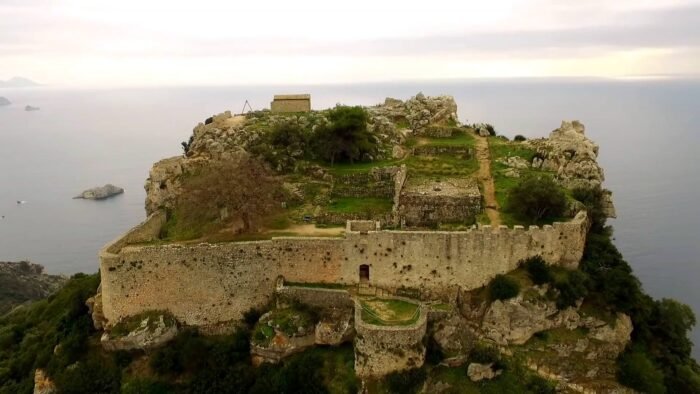
Perched high on a cliff, Angelokastro is a Byzantine castle offering spectacular panoramic views of the Ionian Sea. This fortress played a key role in defending the island during medieval times and remains a symbol of Corfu’s resilience.
Climb up to Angelokastro for breathtaking views and a journey into Corfu’s medieval defense history.
Learn more about AggelokastroMon Repos Palace in Paleopolis
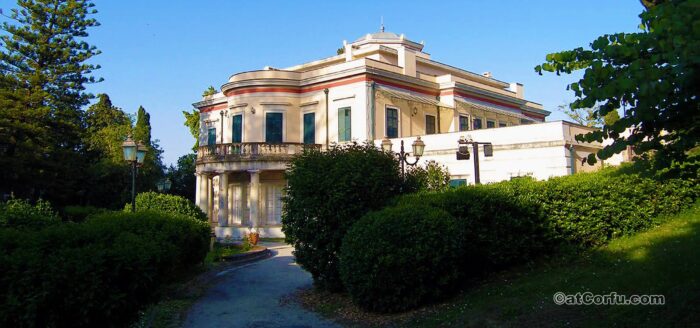
Once a royal summer residence, Mon Repos Palace sits within an archaeological park that reveals the ancient city of Corfu (Paleopolis). Visitors can explore ruins dating back to Greek and Roman times amid beautiful parklands.
Step into royal history and ancient ruins at Mon Repos Palace.
Explore Mon Repos in detailMouse Island (Pontikonisi)
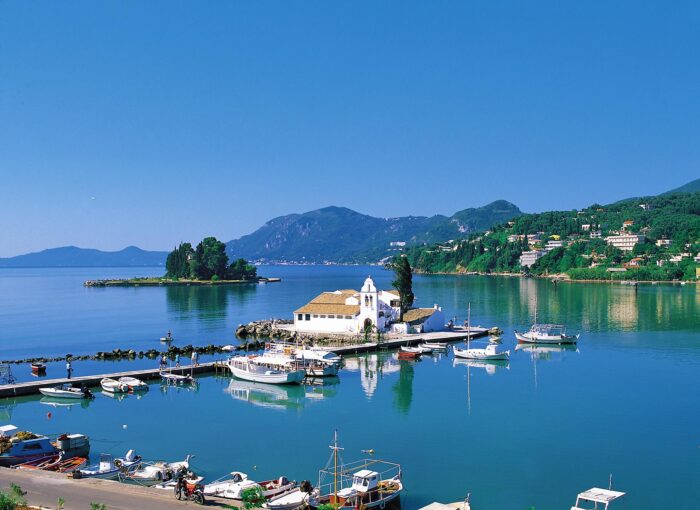
A tiny, picturesque islet covered with lush greenery, Mouse Island is one of Corfu’s most iconic images. Accessible by boat, it features a charming Byzantine chapel and is steeped in local legend.
Experience the magic of Mouse Island, one of Corfu’s most picturesque spots.
Find out how to visit Mouse IslandPaleopolis (Ancient Corfu City)

The archaeological site of Paleopolis offers fascinating ruins of the original ancient city of Corfu. It showcases remains from Greek, Roman, and early Byzantine periods, providing valuable insight into the island’s early history.
Uncover the secrets of Corfu’s ancient past at Paleopolis.
Explore PaleopolisAqueduct of Commissioner Frederick Adam (Benitses)
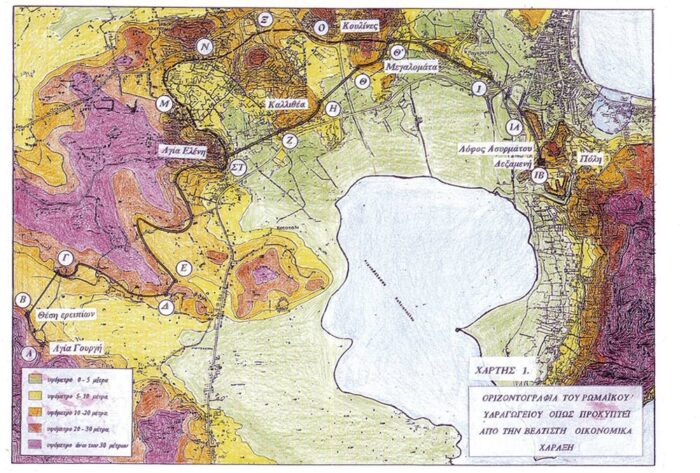
This impressive 19th-century aqueduct is a remarkable feat of engineering that supplied water to parts of Corfu. It is a hidden gem near Benitses, admired for its architectural beauty and historical significance.
Admire the architectural wonder of the Adam Aqueduct in Benitses.
Learn about Roman AqueductRuins of Roman Villa with Baths (Benitses)
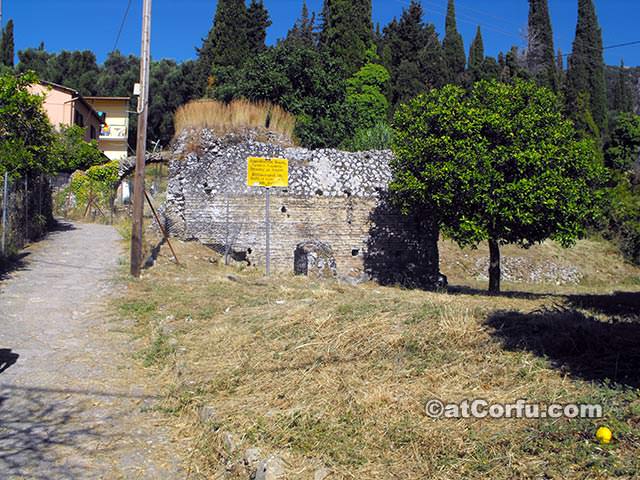
Located in Benitses, these archaeological remains reveal a Roman villa complete with ancient baths. The site offers a rare glimpse into the Roman lifestyle on Corfu.
Explore the ancient Roman villa ruins in Benitses and get a glimpse of Corfu’s Roman heritage.
Plan your visit todayAdditional Sights & Recommendations
Besides the major landmarks, Corfu is full of lesser-known treasures worth exploring:
- Ionian Parliament Building: The seat of local government with historic significance.
- Church of St. George (Old Fortress): A hidden gem inside the Old Fortress walls.
- Narrow Streets of Kampielo: Charming alleys perfect for a stroll.
- Casa Parlante Museum: Experience Corfiot life in this unique living history museum.
- Mount Pantokrator: The highest point on Corfu, offering breathtaking panoramic views.
- Corfu Donkey Rescue: Visit and support this wonderful animal sanctuary.
- Historic Monasteries: Paleokastritsa, Myrtiotissa, and Pantokrator-Kamarelas offer spiritual and architectural interest.
(And many more hidden gems to discover!)
Wrapping Up
Corfu’s rich history and stunning monuments make it a must-visit destination.
From the lively Old City to the peaceful countryside sights, there’s something for every traveler to discover.
Use this guide to explore the island’s cultural treasures and enjoy an unforgettable journey through Corfu’s past and present.




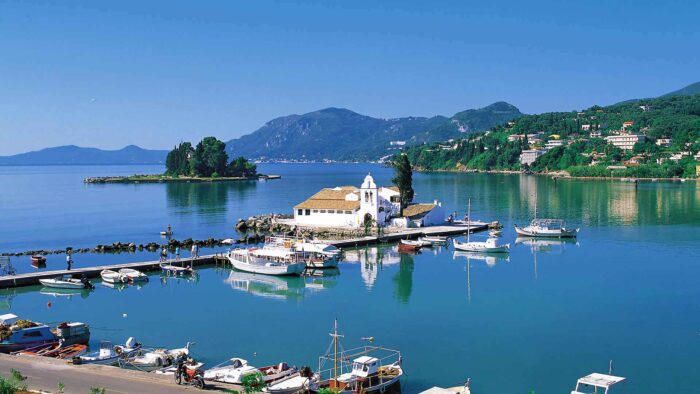

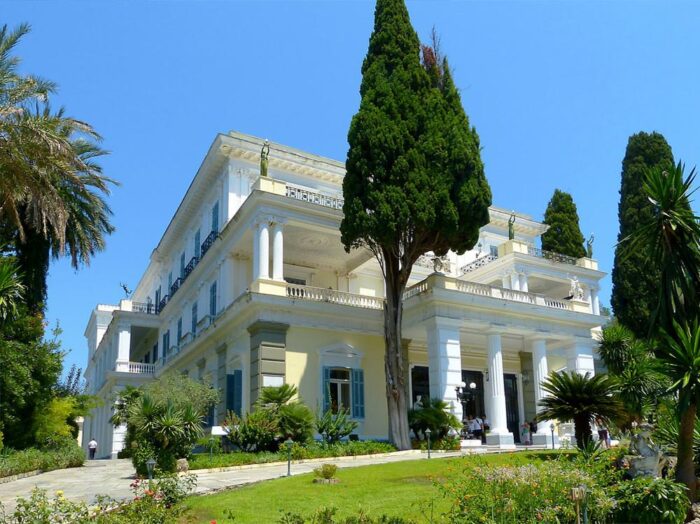
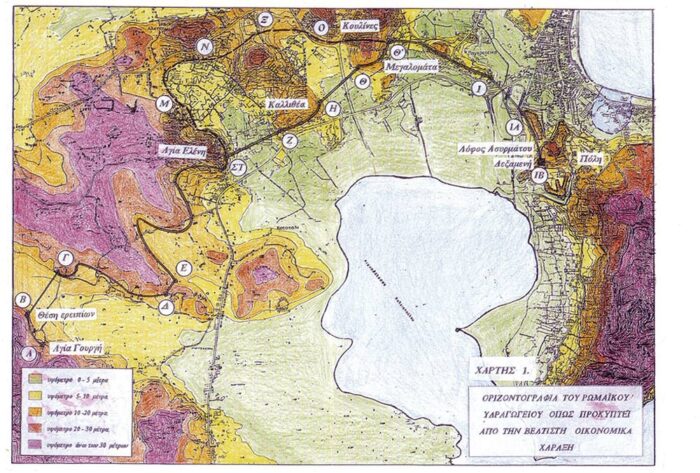

Comments